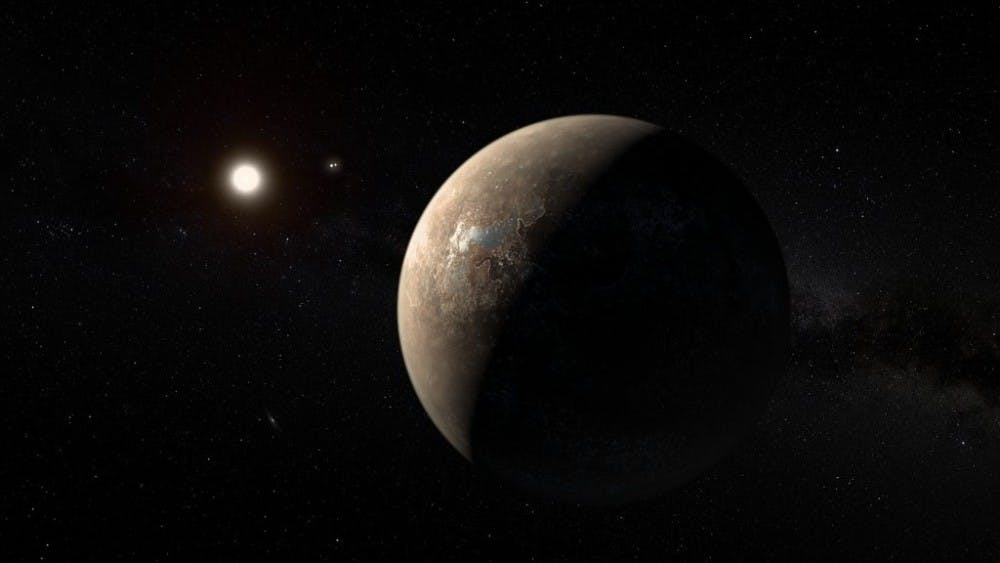Proxima Centauri is the closest star to our planet (apart from the sun). It is located a little over four light years from our solar system. Proxima Centauri is invisible to the naked eye as it is not only further but also fainter than the Sun. This red dwarf sits near the Alpha Centauri AB, a binary pair of much brighter stars.
Proxima Centauri was the subject of close observation earlier this year. Scientists at the La Silla Observatory in Chile monitored it with the European Southern Observatory (ESO) 3.6-meter telescope. This quest, called the Pale Red Dot campaign, was meant to determine whether or not Proxima Centauri wobbled. It was led by Guillem Anglada-Escudé and a group of astronomers from the Queen Mary University of London. Although determining whether or not a planet wobbles is a seemingly odd task, it is quite important in searching for planets other than our own that host life. Slight back and forth movements of a star would indicate that it is acted upon by a gravitational pull caused by an orbiting planet.
Speculation regarding a planet orbiting Proxima Centauri began in 2013, but the results proved inconclusive. Since then, astronomers have been preparing for the early 2016 campaign, which would use ESO to draw more decisive observations. The Pale Red Dot escapade proved quite fruitful in doing so.
The team observed that Earth’s second closest star is in fact wobbling with a deviation of five kilometers. This simple forward and backward movement occurs over the course of 11.2 days and has allowed scientists to deduce that Proxima Centauri is orbited by a planet 1.3 times the mass of Earth at a seven million kilometer radius.
Despite initial excitement, Anglada-Escudé and his team were skeptical to publish results. Because red dwarfs are rather active stars, the motion of Proxima Centauri could be independent from the planet. To debunk this idea, the team pushed further and observed the star’s varying brightness and radial velocity during flares. The astronomers were then able to rule out the chance that the star was merely imitating the presence of a planet.
The planet, named Proxima b, orbits the habitable zone around Proxima Centauri, despite lying much closer to it than Earth does to the Sun. Proxima Centauri is a fainter star, so its hospitable region is much closer. Proxima b actually has an estimated surface temperature that would allow for the presence of liquid water but may suffer from UV and X-ray exposure from the star.
Because of its close proximity to the red dwarf, it is much more susceptible to undesirable light rays from solar flares than the Earth is from the Sun. Our planet’s size and distance from the Sun allows for the existence of water while preventing most UV and X-ray light from hitting its surface.
While the presence of water on Proxima b cannot be ruled out, it is likely that water only exists in selective parts of the surface of the planet, specifically the half of the planet facing Proxima Centauri (the tropical belt). Although studies of the planet’s weather have not been exhaustive, Proxima b’s climate is quite different from Earth’s since it does not have seasons.
In the search for extraterrestrial life, Proxima b may be the subject of further studies as the presence of liquid water on the planet seems quite probable.
With the new wave of telescopes in use, we can hope to see more in-depth studies on Proxima b’s ability to support life. Proxima b also lies within Alpha Centauri, which is the first system outside of our own into which humankind hopes to venture.

















